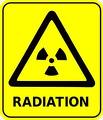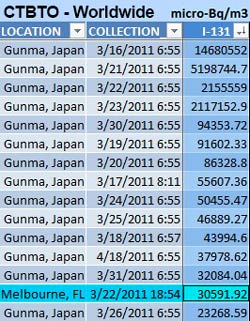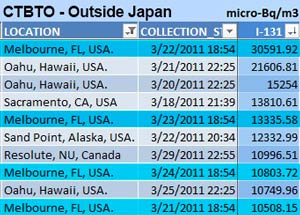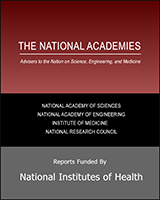THE PROMISE AND PERFORMANCE OF BSAT RESEARCH
More
than 300 years ago, Antonie van Leeuwenhoek constructed a primitive
microscope and made the first detailed descriptions of microorganisms.
More than 200 years ago, Edward Jenner carried out the first
experimental vaccination, using cow pox virus to build immunity in
humans against the deadly smallpox virus. More than 100 years ago,
Robert Koch isolated the
Bacillus anthracis bacterium and postulated a causal relationship between specific microorganisms and disease.
From
these early discoveries, scientists have built more than a century of
research on microorganisms and infectious disease, including research on
some of the most dangerous pathogens. Enormous advances have resulted
in the development of vaccines and other treatments that have greatly
diminished the risks posed by infectious disease agents. It is not an
exaggeration to attribute increased human lifespan and better human
health to the research of legions of microbiologists and other
biomedical researchers on the biology of bacteria and viruses and the
toxins they produce.
At the same time, these researchers have
maintained safety and responsibility in the laboratory. Notwithstanding
the enormous volume of infectious disease research that has been
accomplished, there have been few incidents of pathogenic organisms
being released into the environment by accident, negligence, or
deliberate action. The incidence of laboratory-acquired infection is
similarly exceedingly rare, even though many thousands of scientists
handle highly pathogenic organisms daily. Moreover, scientists have
become less tolerant of the possibility of release or accidental
infection, working to improve biosafety as our understanding of
biological materials and the risks they pose has increased. Scientific
research is safer than it has ever been because of the increasing
concern for safety and security and implementation of protective
measures that minimize risk.
Among the larger group of pathogenic
materials is a set of organisms and chemicals that pose not only a
severe threat to the health of humans, plants, and animals, but also
have the potential to be used deliberately to cause disease, prompt
fear, or destroy agricultural or animal products. More than 80 of these
most dangerous bacteria, viruses, toxins, and fungi have been officially
listed as biological select agents and toxins (
BSAT) and are subject to special security requirements.
1
Whether
deliberately deployed as a biological weapon or the result of a natural
outbreak, the potential for mass human casualty or potentially
catastrophic impact on plants or animals as a direct or indirect result
of select agents is omnipresent. As the National Institute of Allergy
and Infectious Diseases (
NIAID)
opened its most recent strategic plan for biodefense research,
“biological weapons in the possession of hostile states or terrorists,
as well as naturally occurring emerging and reemerging infectious
diseases, are among the greatest security challenges to the United
States” (
NIAID 2007).
The security and safety of our nation—as well as human and agricultural
health around the world—depend upon a deep understanding of these
organisms and toxins.
The most direct impact of research with
BSAT
is in the development of countermeasures against the agents themselves.
Previous investment in research using what are now classified as select
agents has yielded vaccines, drugs, and other treatments to combat
agents such as smallpox, anthrax, and Ebola virus (
Auchincloss 2007).
Continuing efforts against these dangerous pathogens will improve our
capacity to treat and prevent outbreaks when they occur, and advances in
technology will enable more rapid detection of the presence of BSAT
materials in the environment.
But the value of
BSAT
research is not limited to the development of medical countermeasures;
in fact, greater understanding of BSAT materials will also enhance our
ability to respond to a wide range of infectious diseases (
NIAID 2008).
What is learned about this small subset of pathogens can lead to
strategies for responding to a much wider range of infectious diseases,
extending the reach of BSAT research beyond the agents of acute concern
to the much wider array of organisms with significant public health
implications.
The nation’s capacity to conduct research on
BSAT
materials has expanded significantly over the past several years. For
example, the number of laboratories either in operation or under
development that have the capacity to conduct research on the most
dangerous pathogens—agents that pose the highest risk of
life-threatening disease for which no vaccine or therapy is available,
including several select agents—has increased from two before 1990 to
five before the terrorist attacks of 2001 to 15 or more that are
operational or under development at the time of this report (
GAO 2007).
2
Such laboratories are no longer limited to the federal government but
now include facilities in academic institutions, state and local public
health departments, and in the private sector. This expansion can be
attributed to growing concerns about our limited understanding of
dangerous pathogens, increasing ability to add to this understanding,
and an influx of federal support for these activities. One large
federally supported program highlights the growth as a result of
increasing government support: since 2003,
NIAID has supported the development of 11 Regional Centers of Excellence (RCEs) for Biodefense and Emerging Infectious Diseases,
3 which involve nearly 500 principal investigators (PIs)—most new to biodefense—at almost 300 institutions participating in
RCE research activities (
Concept Systems 2008).
The laboratories provide a venue for work with potentially dangerous
pathogens, including those on the list of select agents and toxins.
THE NATURE OF THE THREAT
BSAT
materials have the potential for dramatic impact on human, plant, and
animal health. For this reason, there is a growing concern that these
agents may be used for intentional harm or to induce public panic. The
anthrax attacks of 2001 are a prime example. In addition to killing five
people and infecting 22, this attack had a dramatic impact on our
nation and was estimated to have had a direct economic impact of more
than $1 billion.
Clearly, there is genuine and legitimate concern
that laboratories working with select agents and toxins should receive
special security and safety attention that other types of biological
research would not require. Even though many of the materials on the
select agent list may be found in natural environments, some
laboratories maintain purified strains of the most dangerous pathogens.
In addition, laboratory workers not only have access to these materials
but also may possess the technical knowledge of how to grow them in the
laboratory, although not necessarily the technical knowledge needed to
weaponize them.
This report therefore addresses policies and
practices directed at securing those laboratory facilities in which work
is done with
BSAT
materials. The intent is to protect the laboratories and the agents
from threats posed by outsiders as well as insiders. Although the report
does not focus on biosafety, some of the methods that prevent
accidental infection or release also serve to enhance security and may
be discussed. But the focus of the report is on the security of the
agents, facilities, and personnel.
There are specific issues concerning
BSAT
research that will be addressed in this report, but it is important
first to consider the threat itself. What are the specific scenarios of
concern and which eventualities are to be prevented? While a fully
deliberative consideration of the threat is beyond the scope of this
report, the committee selected several examples of possible threats as
the context for discussion:
A dedicated terrorist or criminal who may break into a
BSAT laboratory with the intent to steal dangerous pathogens or to cause an intentional release.
An individual working in a
BSAT laboratory, with access to pathogens, who may take them out of the laboratory for improper use.
An individual working in a
BSAT laboratory who may serve as an accomplice or conduit for others wishing to do harm, whether deliberately or unwittingly.
Some
individuals cited as examples above are motivated by ideology, while
others are subject to pressure from the promise of money or other
benefits; still others have their judgment compromised by a temporary or
permanent condition or personal crisis. Although some security and
personnel reliability strategies serve to address multiple threats,
others are specific to a given population.
It is important to keep
in mind that access to a pure culture of a select agent or toxin alone
does not represent a major biothreat, although it can be more than
sufficient for an act that is intended to evoke fear rather than mass
casualty. To have widespread impact on health, the agent must be grown
in reasonable quantity with technically complex facilities and
specialized equipment, and may need to be stabilized to remain viable,
packaged, delivered to a susceptible population, and dispersed in a
method that allows the organisms to retain their virulence. Access to
the starting material represents only the first and, in many cases,
least sophisticated step in this process. Nonetheless, denying would-be
terrorists ready access to
BSAT materials is an important component of national security.
SUMMARY OF THE CURRENT SELECT AGENT PROGRAM4
After the anthrax attacks of 2001, the United States expanded the existing regulations governing the transfer of
BSAT materials among laboratories registered with the Centers for Disease Control and Prevention (
CDC) of the Department of Health and Human Services (
HHS) and the Animal and Plant Health Inspection Service (
APHIS) of the U.S. Department of Agriculture (
USDA)
into a rigorous formal oversight system to decide that persons seeking
to possess, use, or transfer select agents or toxins have a lawful
purpose. It also defined how facilities possessing BSAT materials would
be protected. Appropriately defined, such a system would ensure that
pathogens and toxins would be accessible only to legitimate researchers.
The objective of material control for the life sciences focuses on
methods to ensure that any individual with access to select agents would
be trustworthy and that the agents would be secure within each facility
housing BSAT materials.
Chapter 2 describes in greater detail the current policy and regulatory framework governing BSAT research in the United States.
The scope of the Select Agent Program is circumscribed by those agents and toxins on the formal select agent list.
CDC maintains the list for human pathogens, while
APHIS maintains the list for plant and animal pathogens.
5 The list, first introduced in 1997, has grown from an initial 42 CDC agents and toxins to its current 82 CDC and
USDA agents and toxins. The current list includes 40
HHS-only agents, 10 overlap agents, and 32 USDA-only agents (24 animal pathogens and 8 plant pathogens).
6
A formal process for determining whether an agent or toxin should be on
the select agent list has been developed. In July 2009, for example, a
notice in the
Federal Register began the process of public comment on a proposal to add the SARS-associated coronavirus to the list (
HHS 2009a), followed by a second notice in August 2009 of a proposal to add Chapare virus to the list (
HHS 2009b).
Regulations require a formal biennial review process during which the
entire list is reviewed and agents or toxins may be added or removed.
The
USA PATRIOT
Act of 2001 (Public Law 107–56, October 26, 2001) established
prohibitions on the possession of select agents by several categories of
“restricted persons,” including convicted felons or those who had
received a dishonorable discharge from the U.S. military, foreign
nationals from countries designated as supporting terrorism, and current
users of illegal drugs. The Act also made it an offense for a person to
knowingly possess any biological agent, toxin, or delivery system of a
type or in a quantity that, under the circumstances, is not reasonably
justified by prophylactic, protective, bona fide research, or other
peaceful purpose.
The provisions of the
USA PATRIOT
Act were subsequently augmented by the Public Health Security and
Bioterrorism Preparedness and Response Act, known as the Bioterrorism
Act of 2002 (Public Law 107–188, June 12, 2002). This Act added
requirements for regulations governing possession of select agents,
including approval for laboratory personnel by the Attorney General
following a background check by the Federal Bureau of Investigation (
FBI). Entities possessing
BSAT
materials are required to register and have plans in place for
ensuring: (1) the physical security of the BSAT materials in their
possession; (2) appropriate biosafety to guard against an accident or an
accidental release of BSAT materials; and (3) the ability to respond in
the event that an accident, theft, or release did occur. Inspections by
CDC and
APHIS
are used to assess adequacy of the plans; the two organizations also
provide training and compliance assistance for those who are subject to
the regulations. The Select Agent Program began operation with interim
rules in 2003, and final rules were issued in April 2005, as three
sections governing human, plant, and animal agents and toxins (
HHS 42
CFR 73 (Humans);
USDA
7 CFR 331 (Plants); and 9 CFR 121 (Animals)). APHIS and CDC work to
ensure that their separate activities are coordinated and require the
same types of policies, actions, and reporting from those they regulate.
RELATIONSHIP BETWEEN BIOSECURITY AND BIOSAFETY7
The
concepts of “biosafety” and “biosecurity” are related and frequently
complement one another, but they also differ in important ways. The
fifth edition of the
HHS manual
Biosafety in Microbiological and Biomedical Laboratories (
BMBL),
which sets standards for how U.S. laboratories conduct research with
biological agents and toxins, defines biosafety programs as those that
“reduce or eliminate exposure of individuals and the environment to
potentially hazardous biological agents,” while the “objective of
biosecurity is to prevent loss, theft or misuse of microorganisms,
biological materials, and research-related information” (
CDC/NIH 2007:105).
8
One frequently used description of the difference offers a quick and
accessible explanation: “Biosafety is about protecting people from bad
‘bugs’; biosecurity is about protecting ‘bugs’ from bad people.”
As discussed in the
BMBL, the systems developed for biosafety and biosecurity have a number of common elements:
Both
are based upon risk assessment and management methodology; personnel
expertise and responsibility; control and accountability for research
materials including microorganisms and culture stocks; access control
elements, material transfer documentation, training, emergency planning,
and program management…. Biosafety looks at appropriate laboratory
procedures and practices necessary to prevent exposures and
occupationally acquired infections, while biosecurity addresses
procedures and practices to ensure that biological materials and
relevant sensitive information remain secure. Both programs assess
personnel qualifications…. Both programs must engage laboratory
personnel in the development of practices and procedures that fulfill
the biosafety and biosecurity program objectives but that do not hinder
research or clinical/diagnostic activities. The success of both of these
programs hinges on a laboratory culture that understands and accepts
the rationale for biosafety and biosecurity programs and the
corresponding management oversight. (CDC/NIH 2007:105–106)
Not
all aspects of biosafety and biosecurity are compatible. One widely
used example is the kind of signs each would dictate for display in a
laboratory. For biosafety purposes, good practice would require having a
sign on the
outside of the laboratory door to alert people that
work was going on with a potentially dangerous pathogen; the information
would include the name of the agent, any specific hazards, and contact
information for the researcher. From a security point of view,
displaying this kind of information would only make the task of a
would-be thief or saboteur easier. Sharing information about the type of
research being carried out and the safety practices in place in a
laboratory in the name of open communication and public trust with the
surrounding community might also arouse the concern of security
professionals who would prefer to see more restricted use of such
information.
9
Despite these types of differences, good biosafety practices can provide an essential foundation for biosecurity.
10
But biosafety alone will not provide all of the aspects of good
biosecurity, which must also address the risks posed by those with
malevolent intent. Responding to these risks while also enabling a
vigorous and productive research environment is the challenge to which
this report attempts to respond.
THE IMPACT ON SCIENTIFIC RESEARCH
While the scientific community is vitally concerned about security threats posed by
BSAT
research, it is also cognizant of the possible unintended consequences
on the scientific community by overzealous application of policies and
procedures implemented in the name of enhanced security. If procedures
are beyond that necessary to address the risk, the unintended
consequence may be that top scientists are dissuaded from engaging in
BSAT research, perhaps especially younger researchers. This will
threaten the security of the nation because knowledge of pathogens and
the public health measures to protect against them will be diminished.
Therefore, the challenge for BSAT research is to implement those
measures that promote security and simultaneously facilitate scientific
progress in research. Similar concerns apply to others subject to the
select agent regulations, including public health professionals who are
essential to the nation’s response to biological emergencies.
Future
discoveries and successful research on select agents specifically—and
in the life sciences more generally—depend on a healthy, vibrant, and
sustainable research environment. Scientific progress requires that the
best and most creative researchers be encouraged to seek out and solve
interesting and important problems. This, in turn, requires minimizing
the amount of unnecessary regulation and burdensome recordkeeping, which
serve as impediments, and providing clear justification and
transparency regarding those adopted for legitimate reasons, such as
enhancing security.
Science is characterized by the free flow of
information and the ability of research scientists to pursue lines of
investigation that yield the most promising results. Publishing is the
coin of the realm in science, and life scientists conduct research that
is published in many thousands of peer-reviewed journals. The vast
majority of research—including research with select agents and toxins—is
not classified and not subject to restriction with respect to
publication. Open exchange of ideas is essential because it encourages
researchers to pursue research questions in a given area of science, and
it allows scientists to share their research findings and follow new
directions wherever they lead.
For years, when a research project
has raised safety or ethical concerns, the work has been subjected to
oversight. In most cases, this has been local to the institution, with
committees designated by the federal government to carry out the review.
These review committees usually comprise scientific peers and those
from other fields of study who have appropriate expertise, as well as
representatives of the public (see
Box 1-1 for examples of oversight committees operated at the institutional level).

Scientific
Oversight Committees. Several areas of research are monitored by
scientific oversight committees. In each case, these committees operate
at the level of individual institutions, providing oversight for
research conducted at that institution.
(more...)
Where
safety concerns extend beyond the institution, national-level bodies
provide oversight that is consistent across the country. Most prominent
in basic research is the Recombinant
DNA Advisory Committee (
RAC), established by the National Institutes of Health (
NIH)
in 1974 in response to public concerns about manipulation of genetic
materials and use of recombinant DNA technology. The RAC developed and
maintains the
NIH Guidelines for Research Involving Recombinant DNA Molecules,
which has become the standard of safe scientific practice in the use of
recombinant DNA. It also considers other matters relevant to
recombinant DNA, including the review of human gene transfer trials or
novel protocols that raise new scientific, safety, or ethical
considerations. Even though the RAC is a federally chartered committee,
its members are drawn from the extramural scientific community, i.e.,
outside NIH.
Voluntary guidelines can have a significant impact
within the scientific community. For example, there is no legislation
mandating the use of the
BMBL (
CDC/NIH 2007), yet these guidelines are almost universally followed.
11 And the National Academies’
Guidelines for Human Embryonic Stem Cell Research (
NRC/IOM 2005,
2007,
2008) has been adopted nationwide, even without federal legal standing.
12
Unlike
these models, the oversight and screening structures for the Select
Agent Program are considerably more substantial than those applicable to
other biological research, especially in the involvement of outside
oversight bodies and groups not necessarily composed of scientific
peers. Moreover,
BSAT
research is the only area of biological research that requires
verification of personnel beyond assessment of technical competence to
carry out the proposed research protocols. For non-BSAT research, there
has been no issue as to whether the individual may be trusted not to do
harm. Thus, select agent regulations will be unfamiliar to most
scientists. Many researchers also may find the regulations to be a
significant and unusual burden. Members of the community have expressed
concern about the potential impact of the regulations on recruiting and
retaining scientists for select agent research—as well as public health
professionals for detecting and responding to biological emergencies
(e.g.,
HHS 2005;
ABSA 2009;
FASEB/AAMC 2009).
Scientific
careers often involve protracted mentored training, not to mention the
pressure to produce publishable findings. With biomedical researchers
now on average well into their 40s before receiving their first
independent research grant (
NRC 2005),
severe disincentives to pursue research careers already exist, and an
additional burden placed on those who pursue research on select agents
further challenges their decision to follow a career that involves
select agents and toxins. During a visit to the New England Regional
Center of Excellence, for example, the committee learned that a
significant majority of graduate students who began the clearance
process to work with select agents did not complete all steps necessary.
13
Finally,
the committee has learned of a number of researchers at several
institutions who chose to destroy their inventories of select agents and
toxins rather than incur the cost and inconvenience of the security
requirements and personnel screening of the Select Agent Program (e.g.,
Wilkie 2004).
These research scientists chose to pursue other interesting research
questions, rather than go through the arduous task posed by working with
select agents and toxins.
THE CONTEXT FOR THE CURRENT PROJECT: EXECUTIVE ORDER 13486
Concerns about whether the regulations in place for
BSAT
research in U.S. laboratories were adequate to address the risks of
theft, misuse, or diversion of materials increased after the
FBI
announced in August 2008 that it had concluded that Bruce Ivins, a
research scientist at the U.S. Army Medical Research Institute of
Infectious Diseases (
USAMRIID), was the perpetrator of the anthrax letter attacks in October 2001 (
FBI 2008).
There were other concerns from Congress and elsewhere about whether the
“proliferation” of high containment laboratories as part of the
increased funding for biodefense research after 2001 was increasing the
risks of laboratory accidents as well as providing more targets for
those who could pose security threats from either outside or inside the
facilities (e.g.,
GAO 2007,
2008).
The release of the report of the Congressionally chartered Commission
on the Prevention of Weapons of Mass Destruction Proliferation and
Terrorism, chaired by former senators Bob Graham and Jim Talent, drew
additional attention to the perceived risks. The Commission’s report,
World at Risk, began its Executive Summary with the ominous conclusion that:
…unless
the world community acts decisively and with great urgency, it is more
likely than not that a weapon of mass destruction will be used in a
terrorist attack somewhere in the world by the end of 2013. The
Commission further believes that terrorists are more likely to be able
to obtain and use a biological weapon than a nuclear weapon. The
Commission believes that the U.S. government needs to move more
aggressively to limit the proliferation of biological weapons and reduce
the prospect of a bioterror attack. (WMD Commission 2008:xv)
The
Commission recommended a number of steps to increase security at all
U.S. high containment laboratories, not just those conducting
BSAT research.
As part of the response to the various calls for increased regulation of high containment laboratories and
BSAT research, President George W. Bush issued Executive Order (
EO) 13486,
Strengthening Laboratory Biosecurity in the United States, on January 9, 2009 (
White House 2009).
The EO established an interagency Working Group on Strengthening the
Biosecurity of the United States, charged with conducting a
comprehensive assessment of the efficiency and effectiveness of all
laws, regulations, guidance, and practices related to physical,
facility, and personnel security and assurance for BSAT research. The
heart of the group’s report, submitted to the President within 180 days
(i.e., by July 9, 2009), would provide “recommendations for any new
legislation, regulations, guidance, or practices for security and
personnel assurance for all Federal and nonfederal facilities … and
options for establishing oversight mechanisms to ensure a baseline
standard is consistently applied for all physical, facility, and
personnel security and assurance laws, regulations, and guidance at all
Federal and nonfederal facilities…” (
White House 2009).
These recommendations would be supplemented by another extensive
interagency review of biosafety practices being conducted by the
Trans-Federal Task Force on Optimizing Biosafety and Biocontainment
Oversight.
14
To
provide additional input, the Homeland Security Council staff at the
White House requested two other studies. The first, which focused only
on personnel reliability, was carried out by the National Science
Advisory Board for Biosecurity (
NSABB) and issued in May 2009 (
NSABB 2009). The second study was requested from the National Research Council (
NRC), resulting in this report.
15
In
addition to the reports that provide formal input into Executive Branch
deliberations, a number of other relevant reports have been issued in
recent months. The Defense Science Board (
DSB) released a report in May 2009, focused on the
Department of Defense Biological Safety and Surety Program (
DSB 2009). The Defense Health Board (
DHB)
issued a report in April 2009 that addressed whether the military
services needed to own and operate their own biodefense infrastructure
and research program, which affects whether and how it carries out
physical security and personnel reliability programs (
DHB 2009). Two workshops on education by the American Association for the Advancement of Science (
AAAS), one on so-called dual use education (
AAAS 2008) and one focused on biosafety training (
AAAS 2009), offered a number of findings and recommendations related to how the training could support personnel reliability.
16
These reports, as well as numerous meetings and discussions, have
contributed to a lively and sometimes heated discussion of appropriate
approaches to optimizing the security and the quality of
BSAT research.
CHARGE TO THE COMMITTEE
The
NRC appointed a committee with a broad range of expertise to carry out its statement of task, which is reproduced in
Box 1-2 (short biographies of the committee members and project staff are contained in
Appendix A).

Committee
Statement of Task. An ad hoc committee will assess the efficacy of
regulations, procedures, and oversight that have been instituted to
safeguard the public and national security against the deliberate use of
biological select agents and toxins
(more...)
The committee focused its attention on the environments in which
BSAT
research is conducted, which are a subset of the facilities cleared to
work with select agents and toxins. While other entities such as state
and local public health laboratories are subject to the select agent
regulations, most do not have research as their primary focus.
The
committee carried out its work over approximately 3½ months, with two
in-person meetings and several site visits, as well as conference calls
to begin and conclude its work. A list of the meetings and site visits,
including the briefings received by the committee, are contained in
Appendix B.
The committee considered not only the experiences of select agent
laboratories, but also related experiences in other sectors including
nuclear power plants, academic nuclear research reactors, and the
aviation industry—all of which have been concerned about personnel
reliability for some time.
In the end, time constraints meant that
the committee could not give equal attention to all elements of its
task. Therefore the committee decided to concentrate on a set of issues
that it believes are the most important, most critical, and most
effective for both providing security and enabling the highest quality
research to be carried out in an environment that can attract and retain
the best scientists. The focus of the report was also informed by the
elements that had prompted the greatest amount of discussion within the
scientific community and at the public consultations organized by the
NSABB and
EO
Working Group. There are two other items that elicited significant
interest in the public consultations but that could not be considered in
this report. The committee believes these are essential to the safe
conduct of
BSAT research, but time did not allow a thorough review and assessment:
Transportation of Select Agents
Some have identified transportation of select agents and toxins as the
weak link in security procedures. Agents taken from one highly secure
facility to another may be at risk for theft during transportation
because security during this process may be minimal. In addition, the
physical security solutions and workforce involved in transporting
select agents may not adhere to the requirements for select agent
facilities (described in
Chapter 2).
The
committee did not have the time to fully explore this issue, especially
because shipping requirements are based upon international standards
regarding the transportation of hazardous materials. Therefore, any
changes to transportation procedures for select agents could have
unintended consequences for shipping of other materials and could
unintentionally complicate the international exchange of biological
materials.
Cybersecurity
Because many of the physical security solutions depend on
technology—such as cameras, electronic access cards, electronic
inventory systems—there is a risk posed by those individuals able to
hack into these command and control systems. To the extent that these
systems may not be fully secure, additional risks exist.
The
committee’s conclusions and recommendations were developed independent
of the other reports on these topics including those identified above,
although the committee did have access to those reports that had been
released while the committee was engaged in its work (
AAAS 2008,
2009;
DHB 2009;
DSB 2009;
NSABB 2009). The committee did not have access to the reports from the
EO Working Group or the Trans-Federal Task Force, which had not been released before the completion of this report.
ORGANIZATION OF THE REPORT
After the brief introduction to the issues addressed in the report in this chapter,
Chapter 2
contains basic factual material describing the current regulatory
environment including the development and operation of current U.S.
policies to govern
BSAT
research, a review of other federal regulations related to BSAT
research, and a brief discussion of how BSAT research is regulated in
other countries.
Chapter 3
sets out some basic principles that guided the committee in selecting
those issues it chose to emphasize and in reaching its conclusions and
recommendations.
Chapters 4 and
5 discuss specific issues and offer the committee’s analysis and assessments, including its conclusions and recommendations.
- 1
These agents are defined in three sections of federal regulations: 42
CFR
73 for threats to “public health and safety,” 7 CFR 331 for threats to
“plant health or to plant products,” and 9 CFR 121 for threats to
“animal health or to animal products.”
- 2
A 2009 Government Accountability Office (
GAO)
report lists seven operational labs as of 2009—four operated by the
federal government, two by academic institutions, and one by a private
nonprofit organization. GAO counts seven additional facilities in
development, including one that will replace an existing facility (
GAO 2009c).
- 3
-
- 4
Throughout
this report, the term “Select Agent Program” is used to refer to the
National Select Agent Registry Program, which oversees activities
related to biological select agents and toxins. It is a joint activity
of the U.S. Department of Agriculture’s Animal and Plant Health
Inspection Service and the Department of Health and Human Services’
Centers for Disease Control and Prevention.
- 5
A few
BSAT materials that affect both humans and animals are considered “overlap agents” and appear on both the
CDC and
APHIS lists.
- 6
See
Table 2-2 for the current list of select agents and toxins.
- 7
-
- 8
It
should be noted that the use of the term “biosecurity” presents a
number of difficulties. At its most basic, the term does not exist in
some languages, or is identical with “biosafety”; French, German,
Russian, and Chinese are all examples of this immediate practical
problem. Even more serious, the term is already used to refer to several
other major international issues. For example, to many “biosecurity”
refers to the obligations undertaken by states adhering to the
Convention on Biodiversity and particularly the Cartagena Protocol on
Biosafety, which is intended to protect biological diversity from the
potential risks posed by living modified organisms resulting from modern
biotechnology. (Further information on the Convention may be found at
<
http://www.cbd.int/convention/> and on the Protocol at <
http://www.cbd.int/biosafety/>.)
“Biosecurity” has also been narrowly applied to efforts to increase the
security of dangerous pathogens, either in the laboratory or in
dedicated collections; guidelines from both the World Health
Organization (
WHO 2004) and the Organization for Economic Cooperation and Development (
OECD 2007)
use this more restricted meaning of the term. In an agricultural
context, the term refers to efforts to exclude the introduction of plant
or animal pathogens. (See
NRC 2009a:8–9 for a discussion of this and other issues related to terminology.) Earlier
NRC reports (2004ab,
2006ab,
2009ab)
confine the use of “biosecurity” to policies and practices to reduce
the risk that the knowledge, tools, and techniques resulting from
research would be used for malevolent purposes. The
BMBL and this report use the term to cover security for both pathogens and for the information that results from research.
- 9
To
that end, some select agent laboratories do not broadcast their
location, even if that information is considered public. Of course,
emergency services and law enforcement are aware of the location and
operation of these labs.
- 10
This may be particularly important in developing countries, where improving biosafety can also bring many other benefits.
- 11
Although several parts of the
BMBL are used by
CDC and
APHIS
in enforcing the select agent regulations, the guidelines are utilized
much more widely than these required elements, including in laboratories
outside of the United States.
- 12
Even though the National Academies’ Guidelines
have no federal standing, several states have incorporated aspects into
state-level, legally binding regulations, and some research sponsors
similarly require compliance for their grantees.
- 13
According
to representatives of the laboratory, only about two of the 20 students
who began the training and clearance process completed it.
- 14
-
- 15
The
leadership of the National Interagency Biodefense Campus was also
involved in requesting this study, which was conducted through a
contract with
NIAID.
- 16
The
term “dual use” refers to research that, although carried out for
beneficial purposes, could yield knowledge, tools, or techniques with
the potential to be misused to cause deliberate harm.











